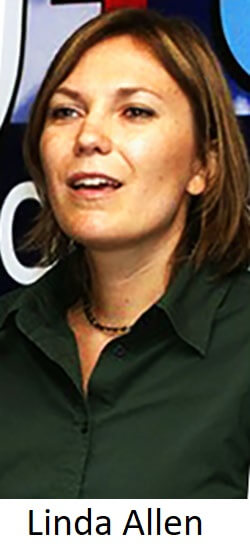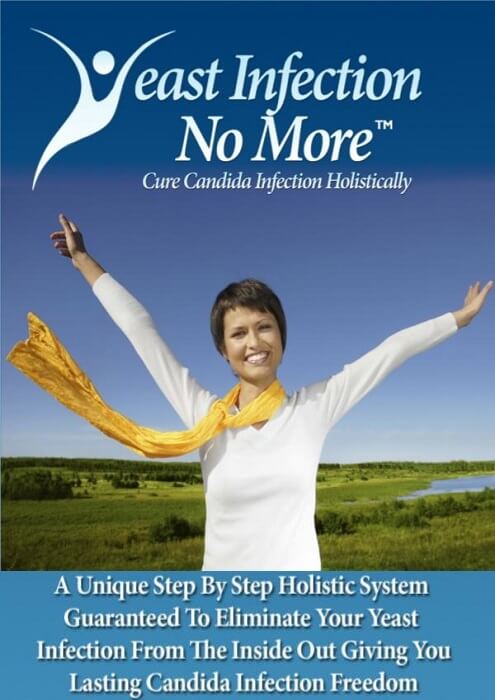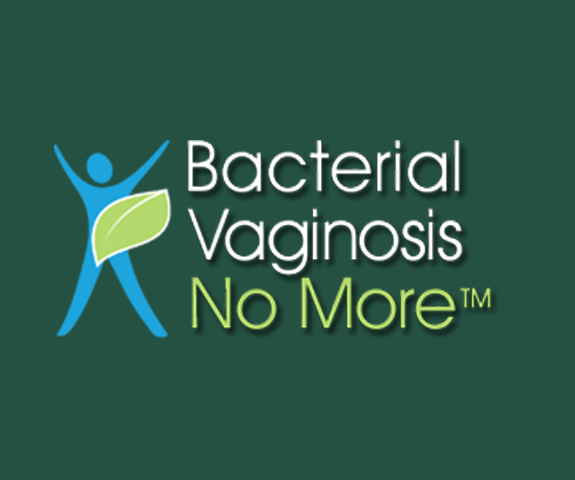See all "How Long" Section Topics

So, how long will Diflucan (common name fluconazole) take to work? For females with vaginal yeast infections, Diflucan can wipe out the Candida in the vagina in as fast as 24 hours—although this is rare.
Women should expect their yeast infections to be cleared up in about three days when using Diflucan. However, around 20% of women who get their yeast infection cleared up, with this drug, can get another yeast infection in about a month.
Concerning men, using oral Diflucan, for a yeast infection on the tip of the penis, can bring about a cure in about 8 days. Some side effects may occur due to taking diflucan, however.
So how Long does Diflucan Stay in your System?
According to a study, published in Antimicrobial Agents and Chemotherapy [34.5 (1990): 909-910], Diflucan (fluconazole) has a half life in the body close to 25 hours. This means 25 hours after you take this drug, there will be half as much in your system. And, 50 hours later, there will be one quarter of the Diflucan left in your system.
After seven days have passed since taking a 150 mg oral dose, there will only be trace amounts of Diflucan left in your body. Diflucan has a high absorption rate; and over 90% of the drug will enter your body.
Remember, Diflucan is Fluconazole
Now in this explanation, of how fast Diflucan works, it is important to understand that Diflucan is the brand name of the drug fluconazole. So, Diflucan is fluconazole. Thus, the studies cited below that talk about fluconazole, are very relevant; as this drug is just labeled in retail venues as Diflucan.
The general dose that seems to be given out, is 150 mg of this drug; and, usually it is orally administered. However, we will discuss one study that looked at a topically applied gel containing fluconazole. Feel free to consult the sources of the studies overviewed here are listed and linked!
A 1/2 Day & Yeast is Gone!
Linda Allen suffered from yeast infections for years. Through researching natural medicine & Candida, she found an efficacious solution!
Linda is one expert you want on your side! Let her show you how to get rid of a superficial yeast infection in just 12 hours; AND, keep it gone!
A 60-day, 100% money back guarantee is provided.
Visit Official Site!Research on Diflucan

A study, published in Antimicrobial Agents and Chemotherapy [34.5 (1990): 909-910], discussed how a single 150 mg oral dose of fluconazole would impact women with vaginal Candidiasis. The study relates that fluconazole has a high absorption rate, with over 90% bioavailability.
Concerning how long fluconazole will stay in your system, this study states the drug has a long blood plasma half-life of 25 hours. So, Diflucan will stay in your system for some time; in 25 hours, about half of the Diflucan you took will still be in your system. In another 25 hours, there will be half as much again—leaving a quarter amount you took.
The study found that even after 7 days passed since the patients took fluconazole, there was a trace amount (average of 0.06 mcg / mL) in the patient’s blood. The study also states, that fluconazole quickly disseminates throughout the body.
Concerning how fast Diflucan works, the study found that, out of the 8 women who took Diflucan, 2 of them were free from vaginal Candida 24 hours after treatment. Regarding the other 6 women, all of them were free from Candida after three days from treatment. All of the patients were without symptoms by the end of the study. The study stated that a single oral dose of 150 mg fluconazole will cause peak vaginal concentrations 8 to 24 hours later.
The concentration of fluconazole in the vagina, will remain above the minimum inhibitory concentration (abbreviated MIC; this indicates the lowest amount of a substance required to arrest the growth of an organism) for most strains of Candida albicans, for a minimum of 3 days.
The next study, related to this topic, was published in the academic journal Infectious Diseases in Obstetrics and Gynecology [13.4 (2005): 197-206]. The research analyzed how quickly Diflucan and Site Release antifungal drugs would eliminate yeast infection symptoms. The study also determined how many women would redevelop an infection within a month after treatment.
The drugs used in the study, were all single dose treatments; and, included Site Release (butoconazole nitrate 2%) and Diflucan (150 mg oral dose of fluconazole). The most significant outcome determinant, was the time the drugs took until the patients experienced the first relief of symptoms. A secondary outcome determinant, was the time it took for the drugs to produce total symptom relief. The study included 181 different women who had moderate to severe vaginal yeast infections.
The study found, that Site Release was faster at bringing about initial relief of symptoms than Diflucan. Site Release had 44.4% of the participants using it see initial symptom relief within 12 hours of use. Diflucan brought about first symptom relief in 29% of those using it in the first 12 hours. At 24.5 hours, about 75% of the Site Release users saw initial symptom release; comparatively, Diflucan took 46.3 hours to achieve the same rate of symptom reduction.
At 48 hours after treatment, 91.4% of Site Release users saw symptom relief and 81% Diflucan users saw symptom relief. Most importantly, the average time to total elimination of symptoms, was similar between the two drugs. It took 64 hours for Site Release and 73.5 hours for Diflucan (both average figures) to fully eliminate vaginal yeast infection symptoms.
Concerning recurrent episodes of vaginal Candidiasis, this study found that 13.4% of the Site Release users and 18.8% of the Diflucan users had a recurrent outbreak within 30 days of treatment.
The study also looked at adverse side effects experienced by the women taking the two different drugs. Some people who take prescription antifungals, will invariably have some side effects.
In all, 66 harmful events were reported in the Site Release group; 16 of these events were deemed to actually be drug related. For Diflucan, 99 harmful events were seen; 32 of these incidents were thought to actually be drug related.
Another study, also discussed fluconazole; specifically, the drug's time to total clinical cure, and how long it stays in the body. The study was published in Mycoses [47.9-10 (2004): 422-427]. The study related, that the clinical cure rate (defined as the absence of signs or symptoms) for vaginal yeast infections was 62%. The mycological cure rate (defined as the absence of Candida cells upon laboratory examination) for fluconazole was 83%. These rates of mycological and clinical cures both happened 7 to 10 days after treatment.
The study reported, that itraconazole and clotrimazole produced superior cure rates than fluconazole did. Regarding the duration fluconazole will stay in the body, the research reported that fluconazole does not stay in the body as long as itraconazole. A 200 mg dose of itraconazole, taken twice in a single day, was found in the body 4 days after treatment.

Another study discussed how well a fluconazole gel would be at treating women with vaginal yeast infections. The research was published in the International Journal of Pharmaceutics [365.1 (2009): 175-179]. In the study, a gel with 2% fluconazole was used on women who all demonstrated severe symptoms of yeast infections.
Those women who used the fluconazole gel, reported symptom amelioration by the second day; and, as time went on, symptoms continued to decrease. After day 6 in the study, most clinical symptoms of vaginal Candidiasis were minimal. The study concluded, that the fluconazole gel used in the study, could be a viable topical treatment for vaginal Candidiasis, and an alternative to oral fluconazole therapies.
An additional study, looked at how women with complicated vaginal yeast infections would respond to a single 150 mg dose, and two sequential 150 mg doses of fluconazole. The study was published in the American Journal of Obstetrics and Gynecology [185.2 (2001): 363-369].
Complicated vaginal Candidiasis included: infections induced by non-albicans species, recurrent episodes, or severe infections. The study tried to see if a double dose of fluconazole, given 3 days apart, would be more efficacious than a single dose of the antifungal for women with complicated infections.
The research included 556 women with repeat, or severe, vaginal yeast infections; and, 92% of these women had Candida albicans. Of these 556 women, 309 were evaluated as fit to participate in the study.
The study found, that 78% of the women in the group using a single dose of fluconazole, had their yeast infections gone by 14 days after treatment. Those women who took the 2 sequential doses, 86% of the women were yeast infection free by 14 days after treatment.
The women, who had a species of Candida besides albicans, were much less likely to have laboratory findings report no Candida by day 14. Of the 13 women who had Candida glabrata, 12 of them still had positive laboratory findings for the presence of this yeast species at day 14 of the study. At day 35 of the study, 65% of the single dose fluconazole group, were evaluated as clinically cured.
For the two dose group, at day 35 of the study, 71.7% were evaluated as clinically cured.
Eliminate Bacterial Vaginosis & Vaginal Odor
Jennifer O’Brien is one prominent expert on BV that knows how to get rid of vaginal odor. BV is a common infection that you don’t have to put up with.
Jennifer will show you how to naturally eliminate vaginal odor in just 3 days.
A 60-day, 100% money back guarantee is provided.
Visit Official Site!Diflucan and Non-Vaginal Candidiasis

One study looked at how well a combination of fluconazole suppositories, and orally taken tablets, would work to clear up oral thrush. The study was published in the journal Mycoses [42 (1999): 269-272]. The research included 101 patients, both men and women; 79 patients in this group were deemed evaluable for the study.
Those patients, with signs and symptoms of oral thrush (such as white plaques in the mouth, burning, and pain), and a positive laboratory finding, were identified as having oral thrush. The treatment lasted approximately 7 to 14 days, with an average duration of therapy of 9.5 days. Patients used suppositories, at the beginning of the treatment, for a minimum of 5 days; after that period, they could be switched to an oral medication.
At the end of treatment, clinical cure was present in 95% of the patients. At a check up, 30 days later, 24% of the patients were found to have relapsed and developed an infection again.
Concerning Candida infections of the penis in men, one study reported how fluconazole would be used to treat Candida balanitis (a yeast infection of the tip of the penis; i.e., the glans). The study was published in Critical Reviews in Microbiology [37.3 (2011): 237-244].
There are a number of prescription antifungal drugs that could be used to remedy this condition. A systemic treatment, is an oral dose of fluconazole. Topical drugs, often take one or two weeks of use, before a solid cure is reached. Yet, one day of oral antifungals is usually enough for a systemic approach.
The research cites a study, that found 92% of men taking a single 150 mg oral dose of fluconazole, had improvement in symptoms. Often, oral therapies are used when a man has a more severe infection.
Another study, also looked at the time it took oral fluconazole to cure men with Candida balanitis. The study was published in Genitourinary Medicine [72.2 (1996): 98-102]. There were 157 men who participated in the study. The research divided the group of eligible men into two groups; with one group taking a single oral dose of 150 mg fluconazole.
After treatment was administered at the start of the evaluation, follow-up visits were arranged 8 to 11 days later (short term), and 28 to 32 days later (long term). At the first follow up visit, 92% of the men who took fluconazole were clinically cured or had improved. At the long term follow up visit, 67% of the men taking fluconazole were clinically cured or had improved. Fluconazole totally wiped out all Candida in 72% of the men who took this drug.
Clair Goodall: Author & Nature Lover
Clair Goodall is a bee-obsessed natural medicine convert from Minnesota. She is one expert you might want to know more about!
Clair will help you protect you and your family from toxic products and chemicals and help you discover solutions from nature.
Also, Clair’s book is backed by a 60-day, 100% money back guarantee
Visit Official Site!Diflucan Side Effects

If you are pregnant, you should know fluconazole can slightly increase the chances of having your baby develop birth defects. And, small children taking fluconazole can develop adverse side effects as well. Since natural remedies are often as good, or even better than prescription antifungals, you should consider using them instead of harsh synthetic drugs.
For more information on fluconazole side effects, you can check out: Yeast Infection Pill Fluconazole.
12 Hour Natural Yeast Infection Cure

There are significant minority of women out there who suffer from frequent, repeated yeast infections. One of these women was Linda Allen; and, Candida would dominate her life for years—hurting her entire health and bringing all the arduous symptoms of vaginal yeast infections back again and again. Linda’s problems with yeast started in her late teen years.
When she found she had a vaginal yeast infeciton, Linda made an appointment with her doctor. She did get a prescription, and used it. The antifungal drug worked well; however, a little while later Linda noticed she had another yeast infection. Again, she went to her physician and got a prescription. The drugs worked well, but as time went on Linda came down with another yeast infection.
The vicious cycle of repetitious Candida attacks would last for about a decade in Linda’s life. And, the yeast had not stayed in her vagina; Linda’s body was become a breeding ground for yeast. Linda would find herself feeling miserable and she didn’t know why. When she went to her doctor, all she would get would be prescriptions for stronger and stronger antibiotics.
This helped her briefly, but likely just made her Candida problem even worse! Those who knew Linda may have wondered why she was seeing the doctor so much—they may have thought she was sicker than she was letting on. In her dark time, Linda found herself rather poor due to all the expensive drugs and doctors visits.
Things suddenly changed when Linda by chance made an appointment with a naturopath. The naturopath quickly knew what was going on with Linda’s body: systemic Candidiasis. The naturopath gave Linda some direction, but didn’t provide her with a permanent answer for her health problems.
Yet, this revelation provided by the natural medicine expert was a significant turning point in Linda’s life.
Linda took up a serious interest in natural medicine and medical information related to Candida. For about a decade, Linda read a vast array of medical texts and books related to yeast infections. Linda also tried a wide variety of alternative therapies for Candida.
If a doctor or naturopath would lend her some of their time; Linda would learn from their experience. What she began to glean from her experience and study were keys to understanding the root causes of yeast infections. And, Linda began to put together her own new approach using her vast, hard won knowledge.
Linda finally arrived at a treatment option to permanently end her recurrent yeast infections. Linda would spend about a year polishing and refining the treatment before giving it a try. When she was satisfied with her approach, she tried it out on herself. Linda began to find that quickly her yeast infections went away.
As time went on, the common experience of seeing another Candida outbreak never happened. Concerning her general health, she steadily began to improve and not feel miserable any longer. Eventually, after enough time had passed, Linda decided she was wholly well and free from Candida! Linda’s novel approach had finally solved the Candida puzzle.
Linda found that those who tried her method would also see amazing results. Yeast infection symptoms would clear up in just 12 hours after someone started using her method. Linda eventually decided to write a book detailing how to repeat her success and permanently end Candida health issues.
Linda has published her book as a downloadable ebook, and it can be acquired right away if you’d like to give it a try. Linda’s publishers is one of the largest digital retailers in the world; it is a publishing company owned by the large U.S. based firm Keynetics Incorporated. Linda also knows what it’s like to be let down by a purported cure, and offers a 100%, 60 day money back guarantee.
If you don’t see the promised results from Linda’s methods, you can quickly request a refund from her publisher and get all your money sent back to you. Thus, you are safe to give her work a try at no risk to you.
If you’d like to learn more about Linda’s personal life story, see testimonials of others who successfully used her book, or find out about some of the bonus books she offers with her book, you can find out more at Linda Allen’s website. Since Linda’s book was first published in 2004, over 100,000 people from all over the world have seen amazing results by applying Linda’s treatment.
Author: Mr. Nicholas Gross

Nick Gross is a natural medicine enthusiast who has been researching and writing about natural medicine since 2008. Nick is primarily a web developer but also researches and authors written and video content about natural health. Nick has a bachelor’s degree in Management Information Systems from the University of Northern Iowa.
Disclaimer
The information on this website is not a prescription for anyone. This information is for informational or educational purposes only, and is not a substitute for professional medical advice or consultations with healthcare professionals.
Affiliate Disclosure
Some of the links provided on this website are affiliate links. When a purchase is made through these links, Candida Hub earns money from commission. This helps to keep the website up and helpful to people for free. Thank you for any support!
Stay Up to Date
If you enjoyed this article, consider following / liking our Facebook page. This page is primarily utilized to alert followers of new articles that are put on Candida Hub. Candida related news is also discussed. While you are there, you can see what has been more recently added to Candida Hub.
SOURCES:
- http://dx.doi.org/10.1128/AAC.34.5.909 — Houang, E. T., et al. "Fluconazole levels in plasma and vaginal secretions of patients after a 150-milligram single oral dose and rate of eradication of infection in vaginal candidiasis." Antimicrobial agents and chemotherapy 34.5 (1990): 909-910. PubMed PDF Full Text
- http://dx.doi.org/10.1155/2005/453239 — Seidman, Larry S., and Campbell K. Skokos. "An evaluation of butoconazole nitrate 2% Site Release® vaginal cream (Gynazole-1®) compared to fluconazole 150 mg tablets (Diflucan®) in the time to relief of symptoms in patients with vulvovaginal candidiasis." Infectious diseases in obstetrics and gynecology 13.4 (2005): 197-206. PubMed PDF Full Text
- http://dx.doi.org/10.1111/j.1439-0507.2004.01023.x — Urünsak, M., et al. "Clinical and mycological efficacy of single?day oral treatment with itraconazole (400 mg) in acute vulvovaginal candidosis." Mycoses 47.9?10 (2004): 422-427. PubMed
- http://dx.doi.org/10.1016/j.ijpharm.2008.08.021 — Bachhav, Yogeshwar G., and Vandana B. Patravale. "Microemulsion based vaginal gel of fluconazole: formulation, in vitro and in vivo evaluation." International Journal of Pharmaceutics 365.1 (2009): 175-179. PubMed
- http://dx.doi.org/10.1067/mob.2001.115116 — Sobel, J. D., et al. "Treatment of complicated Candida vaginitis: comparison of single and sequential doses of fluconazole." American journal of obstetrics and gynecology 185.2 (2001): 363-369. PubMed
- http://dx.doi.org/10.1046/j.1439-0507.1999.00452.x — Plettenberg, A., et al. "Efficacy, safety and toleration of fluconazole suppositories in the treatment of oral candidosis Wirksamkeit, Verträglichkeit und Akzeptanz von Fluconazol-Suppositorien bei der Behandlung der oralen Candidose." mycoses 42 (1999): 269-272. PubMed
- http://dx.doi.org/10.3109/1040841X.2011.572862 — Aridogan, Ibrahim Atilla, Volkan Izol, and Macit Ilkit. "Superficial fungal infections of the male genitalia: a review." Critical reviews in microbiology 37.3 (2011): 237-244. PubMed, PDF Available Here
- http://dx.doi.org/10.1136/sti.72.2.98 — Stary, A., et al. "Comparison of the efficacy and safety of oral fluconazole and topical clotrimazole in patients with candida balanitis." Genitourinary medicine 72.2 (1996): 98-102. PubMed PDF








